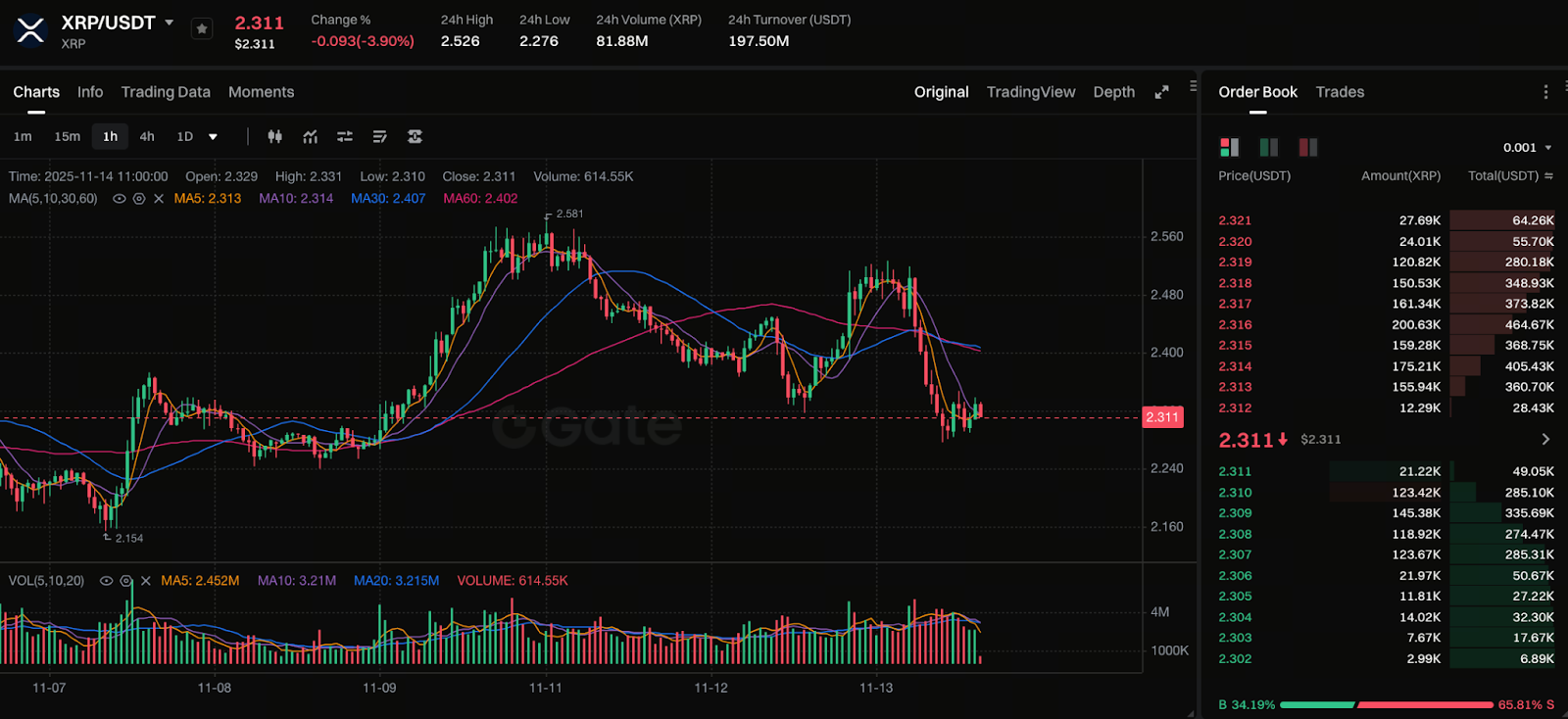The First Spot XRP ETF Launches: Ushering in a New Era for Crypto Assets
What Is a Spot XRP ETF?
An Exchange Traded Fund (ETF) is an investment fund traded on exchanges, allowing investors to buy and sell shares much like stocks. Compared to directly purchasing cryptocurrencies, ETFs offer a more familiar investment vehicle. A spot XRP ETF is an ETF that holds and tracks the real-time price of XRP itself, not futures or derivatives. Recently, the US market has seen the launch of its first such product.
Background: Why XRP?
Ripple Labs developed XRP to serve as infrastructure for cross-border payments, asset issuance, and value transfer. Canary Capital introduced the ETF, trading under the ticker XRPC, which has been approved for listing on the US Nasdaq. Notably, before launch, several institutional XRP ETFs appeared on the Depository Trust & Clearing Corporation (DTCC) “active or pre-launch” list, signaling accelerating institutional readiness for XRP investment products.
Launch Day Price and Market Reaction

Source: https://www.gate.com/trade/XRP_USDT
On its first trading day, XRPC saw over $36 million in volume, indicating strong market demand. XRP’s price also climbed on the news: in the lead-up to the ETF’s launch, XRP gained roughly 6%. According to CryptoSlate, XRP’s price during the week of the ETF launch fluctuated, indicating volatility. Broadly, anticipation of new institutional investment channels fueled the price rally, but also led to increased volatility.
What Does This Mean for Investors?
- More Access: ETFs let retail investors gain exposure to XRP through traditional brokerage accounts, eliminating the need to manage digital wallets or handle self-custody.
- Institutional Adoption: With XRP now available in ETF form, institutional investors can participate more easily, as has been the case with BTC and ETH ETFs.
- Deeper Liquidity: Large-scale capital entering the XRP market via ETFs could increase market depth, lower trading slippage, and narrow the gap between retail and institutional investors.
- Greater Adoption and Confidence: This move demonstrates growing confidence in XRP and its ecosystem and supports long-term growth.
Potential Risks and Key Considerations
- Speculation vs. Fundamentals: Like other new products, the market may have priced in expectations, so if inflows lag post-launch, prices could correct. Some reports note a “buy the rumor, sell the news” pattern.
- Regulatory Uncertainty: Although XRPC is approved for listing, regulatory frameworks for digital assets and crypto products continue to evolve. Investors should closely monitor for policy risks.
- Fund Structure and Liquidity: While ETFs are convenient, they differ from direct token ownership. The details of the fund’s actual XRP holdings, liquidity mechanisms, and fee structure remain key considerations.
- Broader Market Impact: The crypto market is highly sensitive to macroeconomic conditions, regulatory changes, and monetary policy. Positive developments for XRP do not shield it from broader market forces.
Summary
The first spot XRP ETF—launched by Canary Capital under the ticker XRPC—marks a significant milestone in XRP’s path to broader institutional and mainstream acceptance. For those interested in XRP but hesitant to manage wallets or private keys, this ETF provides a seamless entry point. Still, investors should remain prudent. Monitor actual fund inflows, regulatory shifts, and market conditions. If you’re new to XRP or ETFs, consider starting small, diversifying your portfolio, and closely monitoring trading volumes and price trends. The coming months will be critical in determining if XRP can mirror the growth trajectory seen with BTC and ETH ETFs following their respective launches.
Related Articles

Pi Coin Transaction Guide: How to Transfer to Gate.io

Flare Crypto Explained: What Is Flare Network and Why It Matters in 2025

How to Use a Crypto Whale Tracker: Top Tool Recommendation for 2025 to Follow Whale Moves

What is N2: An AI-Driven Layer 2 Solution

2025 BTC Price Prediction: BTC Trend Forecast Based on Technical and Macroeconomic Data
